For an outdoor wooden construction to last as long as possible, the right wood must be chosen, correctly constructed and protected against the sun and weather. Each of these aspects are equally important. No point in choosing the right wood if water's splashing on it. Also, you've done nothing if you've invested a lot of money to build it properly, but you're using finishing materials chosen at random or because a friend told you that they've been on the kitchen table and it still looks good 20 years later.
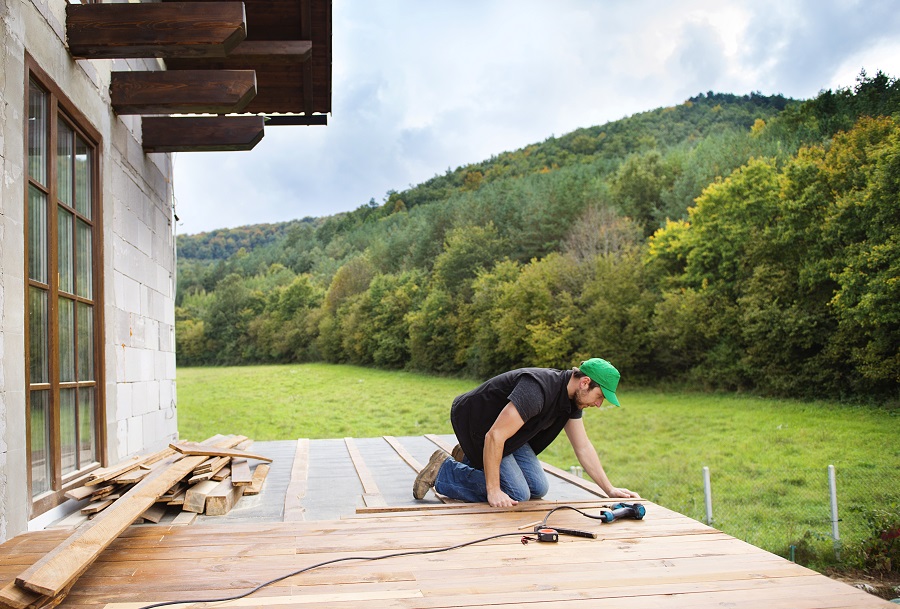
I was recently asked about the materials and steps to finish a resinous wood deck using a water-based system. The owner of the deck had chosen this system because he didn't want the odor and flammability implied by solvent-based products. I think the subject may be of interest to many of you, professional or amateur, so I will expand on it below.
Water and sun, the enemies of outdoor wood
Outside, wood needs to be protected from sun and water. The sun attacks the surface of the wood and changes its color, and persistent water can cause it to rot. That's why a good finish must deflect the sun's rays, keep water out and allow it to drain away. Find here the most important rules for exterior wood construction.
The ally in the fight against the sun are the pigments contained in the products. This is why there are no perfectly transparent and colorless exterior paints. Pigments suspended in the varnish or varnish layer reflect and deflect the sun's rays. The more pigment, the better. That's why paints give the best outdoor resistance.
Wood has grown with water and has an affinity for it. That's why it must be covered with materials that keep water away. If given the chance, it will absorb water which will cause it to rot over time. Sloshing water that doesn't drain away creates the conditions for mould formation. That's how the black color visible on fences and fences in the country. If left undisturbed and allowed to grow (damp), mold will eventually lead to wood rot. In addition to products that allow water to drain away quickly, construction solutions must be adopted that do not allow water to stagnate and allow air to circulate to dry out the moisture left after rainfall.
What an exterior waterborne finishing system contains and the order of application
To get the best possible resistance over time, it is best to use professional products. These are systems specially made to protect wood outdoors. I say systems because it is not just one product applied in successive coats, but several products which, applied correctly, provide long-lasting protection for the wood.
A complete outdoor water-based system includes insulation, impregnator, primer and varnish or paint. On the market, especially in DIY stores, there are products that claim to contain all of the above, those 3-in-1 lazers. They certainly contain some of each of them, but that one wonder product that does everything that each of the products mentioned does well does not exist. It's a compromise made in favor of lighter application, but that comes at the cost of decreasing strength over time. Quality translated into increased durability is achieved by using the complete system and following the application technology.
Isolator is used when the wood to be coated is tannin (oak, acacia, meranti, mahogany). I have seen here what can happen if such wood is not insulated before painting. It is the first coat that is applied. Resinwood, as in the case of the terrace we started from, does not need insulation. But there are situations where the knots contain resin that could affect the color of a light finish. In this case the knots can also replaced with twigs or isolated. Find here Node isolation solutions.
Impregnating (some also call them lazes, but different from the above) are solutions for coloring and protecting wood. They contain mixtures of colorants and pigments that are resistant to direct light and UV radiation, and sometimes insect fungicides. They are applied as a first coat on wood when there is no risk of discoloration or over insulation. If the wood is stained, there is no need for a first coat of impregnating product to color it. In this case, the impregnant should only be used if it contains insect fungicides.
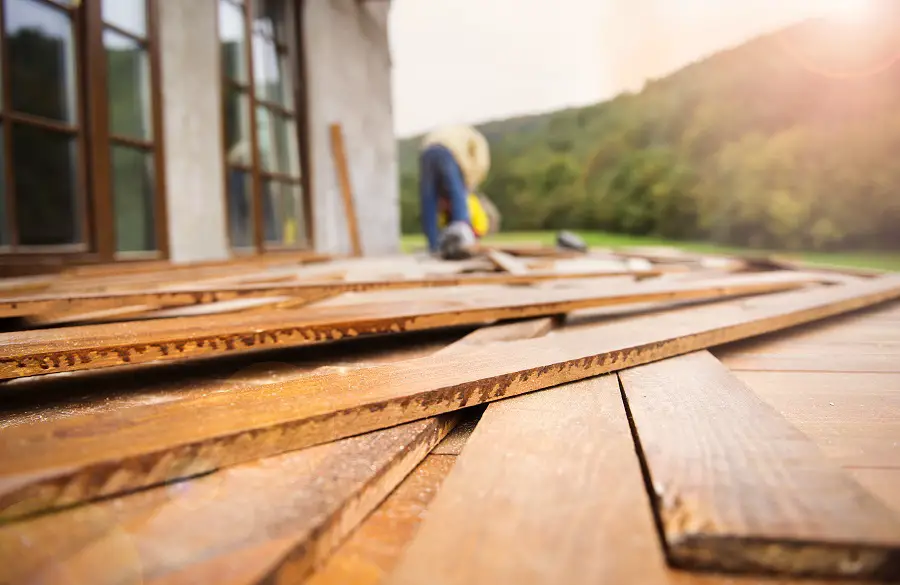
Some firms offer exterior wax impregnating waxes. They are different from ordinary impregnating waxes. They are used where durability is not the first requirement and are the only product to be applied in 2-3 coats. Such a finish should be redone annually, after 2 years maximum, if the season has not been rainy, there have not been persistent winds and the air is not salty.
Grundul is applied over the impregnant. It is not a mandatory step, but in my opinion, it is easier to work with the primer-coating system than applying 2-3 coats of varnish and for this reason the results are much better. The primer gives consistency to the film and is easier to sand, allowing finer surfaces. The alternative is a varnish/paint formulated in such a way that several successive coats can be applied. In the case of an opaque finish using paint, the use of primer also reduces costs.
Lacquer/paint is the final coat that is applied over the sanded and stripped primer. These are the materials that come into direct contact with the sun and the elements, which is why they contain pigments, and the film is very good so that water drains off very quickly and easily. The primer, varnish and exterior paint have good elasticity which allows the wood to vary dimensionally without the finish coat cracking.
I have, for more than 20 years, had windows with laminated oak frames finished with a full waterborne system. In all that time, they have been sanded only once on the surface and another coat of varnish applied as a preventative treatment. It still looks perfect, and the good quality finishing materials, the correct application of the whole system and the well-chosen construction solution have contributed to this.
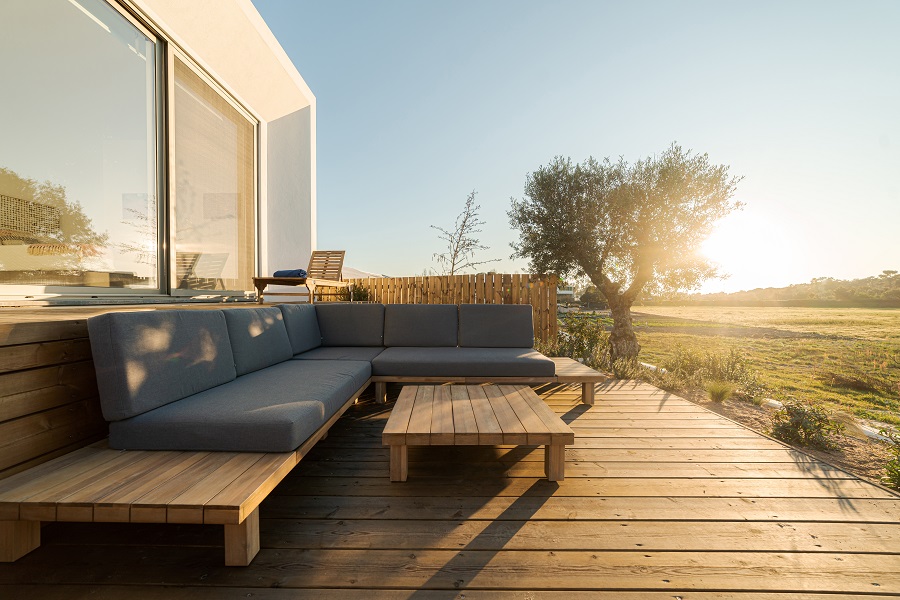
Recommendations for a durable finish
Below are some of the things you need to pay attention to in order to have protected wood for a long time:
- Wood sanding - prepare the wood properly before applying the first coat. Correct sanding ensures that subsequent coats will adhere better, sand smoothly between coats and look good.
- sanded between coats - in addition to the unpleasant appearance, high wood grain can contribute to decreased strength over time because it is a pathway for moisture to penetrate. It also contributes to increased surface roughness and slower water run-off.
- do not dilute the primer/lacquer/paint more than 5% - the water will be absorbed by the wood and cause the grain to rise even more. Usually such products are ready to use. Even though they look very thick, there is an apparent viscosity that allows vertical application without spillage (thixotropic products - find here explanation).
- don't apply very thick coats - even if the materials are resilient, a very thick coat is likely to crack over time and so compromise protection.
- opt for matte finishes - the sheen is less resistant to the sun. The matting agent in the varnish also helps deflect UV rays.
- Check the appearance of surfaces from time to time, especially before cold periods with persistent damp. If you notice the slightest crack, sand lightly and apply another thin coat of varnish. Don't wait for water to penetrate under the film because then the protection is compromised. Everything needs to be removed and the finish redone.
- use maintenance products - they are easy to apply and extend the life of the finish.
I hope you find the above information useful. If you have any additions or questions, please leave them below in the space provided. I will certainly reply.



























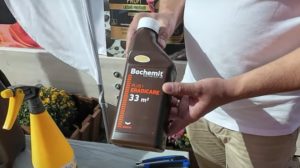
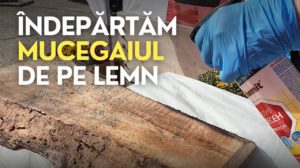







Hello,
I have a guard on my country house, laced up 3 years ago, where one side of the house has been scouring the whole lake. On the other 3 sides where the rain is not directly hitting and the sun is not too strong, no damage is visible.
I bought a primer and a 3-in-1-lacquer-for-lemn-kober-ecolasure-extra-steel-closed-on-water-bath-interior/exterior but I don't know what the treatment steps are for the damaged area and for the area where the lake is not affected?
Can you please tell me how to treat these two areas?
I understood from what I read on your website that the damaged area should be cleaned down to the wood, then primed and then 2-3 coats of 3 in 1 lacquer, in between each stage smirgeheluluindo. Did I understand correctly?
What about the area where the lake is not affected? Can I just give a 3 in 1 lazura start directly over the old lake?
Thanks a lot for your help!
Good evening!
Indeed, the affected area needs to be sanded and cleaned until you get to the wood. That's also the Kober recommendation. You can download the product datasheet, with application instructions, from the company's website. The manufacturer does not recommend applying primer, but rather 2 coats of ecolase. The drying time between coats is min. 2 hours, and 24 hours are needed for complete drying after the last coat.
The manufacturer does not recommend applying over an older coat. In my opinion, you can only apply a coat of ecolazure if the material originally applied was still water-based and if you lightly sand the surface before application with 240 or 280 sandpaper. Sanding will increase adhesion, which is very important with water-based products. If the adhesion is not good, even a light bump or knock will cause the new coating to peel off like a skin.
Check before the old layer in the unaffected area is really free of problems. If the layer has started to peel, the process will continue even if you apply another layer on top.
Good luck!